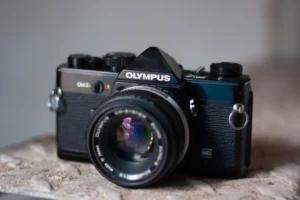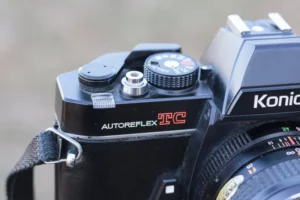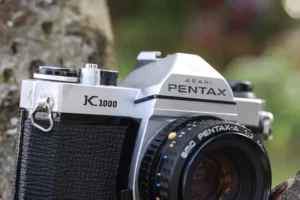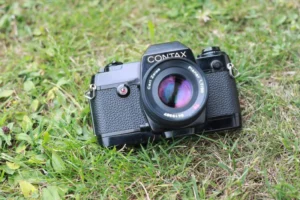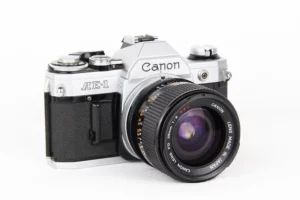Minolta X-700 Review: A Camera For Professionals and Beginners
Last Updated on December 28, 2023
Editorial Note: By purchasing through the links on DustyGrain, we may earn a commission. These earnings do not dictate our opinions or product evaluations.
The Minolta X700 is a 35mm film camera that’s been hailed as one of the best film cameras from the 90s. While it’s not as popular as other options, it still has a loyal following for its quality build and performance.
But above all we are talking about a camera with history, which at the time was considered a versatile camera that offered everything, in a balanced way.

Table of Contents
X-700 Specs
| Release: | 1981 |
| Type | SLR 35mm |
| Mount | Minolta SR mount (MD) |
| Finish: | Black, plastic body |
| Focus | Manual |
| Shutter: | Cloth horizontal focal plane shutter, electrically controlled |
| Shutter speed: | 4 to 1/1000 second, Bulb |
| Exposure | Program, Aperture priority, Full Manual and Bulb |
| ISO range: | 25 – 1600 |
| Flash | Hot shoe, PC terminal |
| Flash sync: | 1/60 sec |
| Battery | x2 LR44, S76, SR44 |
| Frame rate | 2 frames per second, 3.5 frames with Auto Winder-G winder |
| Dimensions | 51.5 x 89 x 137mm |
| Weight | 500 gr. |
History
The 80’s and 90’s. Wasn’t it a great time? Coming to power in 1982, Gorbachev decided without further ado to end the Cold War.
The 80’s synthesizer hits and the 90’s Eurodance time are not liked by everyone, but compared to today’s test-tube blare, which always sounds the same, they were at least two formative decades.
The culmination of this worldwide party seemed to be the annual Love Parade in Berlin. Ecstasy, fun, carefree. The famous historian Francis Fukuyama even proclaimed the time as the end of history when there would be no more global political contradictions.
But there is another interpretation of this time. Microchips conquer the world, everything is computer controlled and packed in plastic. Handmade music is replaced by computer generated tones. And the collapse of the USSR was far from the end of history, just a brief breather, until September 11, 2001.
The Minolta X-700 entered the world public eye a year before Gorbachev. The “Camera of the Year 1981” survived the Russian’s political career for another 8 years.
Only in 1999 was the Minolta X-700 no longer manufactured. 18 years of production is a proud age in times when a successor model is presented at least every 2 years.
At the end of the 1970s, program automatics were all the rage in the camera industry. In 1977, Minolta introduced the XD11, a camera with a de facto program automatic mode, without really advertising it.
Canon jumped on this train with the A-1 as early as 1978 and presented its first program automatic.
The box office hit Canon AE-1 was also replaced in 1981 by the Canon AE-1 Program. In response to this development, Minolta designed the X-700, which stood above the X-500 and X-370 as the top enthusiast model.
It was to be a camera that anyone, experienced or novice, could use. It should be both easy to get started and appeal to experienced hands.
Features
Buzzwords already existed back then and Minolta was not stingy to follow the spirit of the times:
It was computer controlled, of course, and the “MPS” logo on the front discreetly referred to the “Minolta Program System“, i.e. the automatic program.

However, Minolta’s top product should not be reduced to this one point. Because the camera follows a bloodline of very successful and highly regarded machines, from the SR-T 101 to the XD-11 to the X-700 to name a few.
Functionality
The operation of the camera is beginner-friendly and smooth. If you use the automatic modes, you are quickly done with setting the camera, dial to A and choose the aperture yourself or set the wheel to “P” and the “green”, smallest aperture, usually aperture 16 or 22.
By lifting the rewind button, the back of the camera pops open, insert the film, put it in the spool, close it and you’re ready to go. Despite being plastic, the X-700 has a full film transport lever that can be parked in two positions.
On the one hand protruding slightly from the camera so that it can be opened more quickly and on the other hand a position directly on the selection wheel so that the lever cannot get caught anywhere.
A good idea, even if the lever is a bit too rounded for me personally. The elevator itself is nice and short and crisp.
Overall, however, you have to like the plastic appearance of the Minolta X-700. It’s not a metal-and-leather camera like the ones commonly found in the ’70s.
However, it doesn’t look cheap. If you’re out and about with the camera for a long time, you never get the impression that something might fall off. It also does not produce any rattling noises.
Shutter
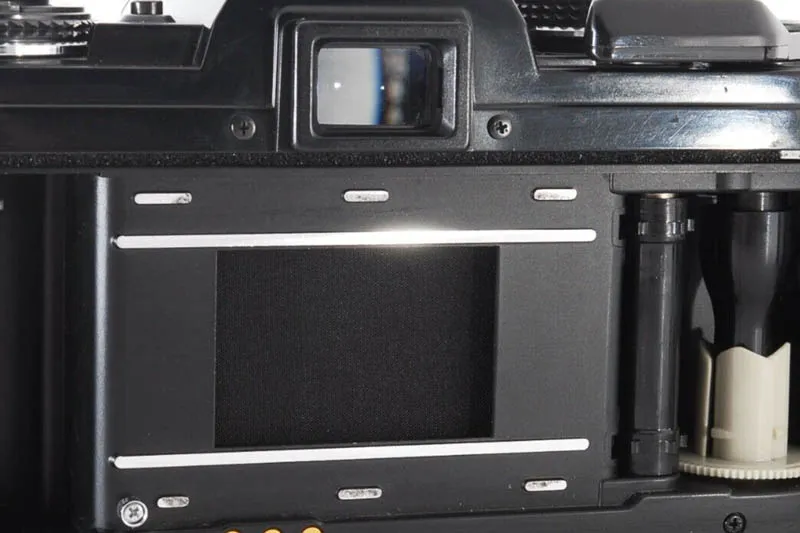
The shutter is a horizontal movement of the curtain type, simple and correctly fulfills its function without being too noisy as expected. The speed range is from 4 seconds to 1/1000sec and is electronically driven.
Some sounds like the rewinding, exposure check beep (on) and shutter sound you can hear in this video.
Design
The X-700 is also very ergonomic to hold thanks to two small bulges, one on the front as a small handle and a thumb rest on the back. The hand never gets tired.
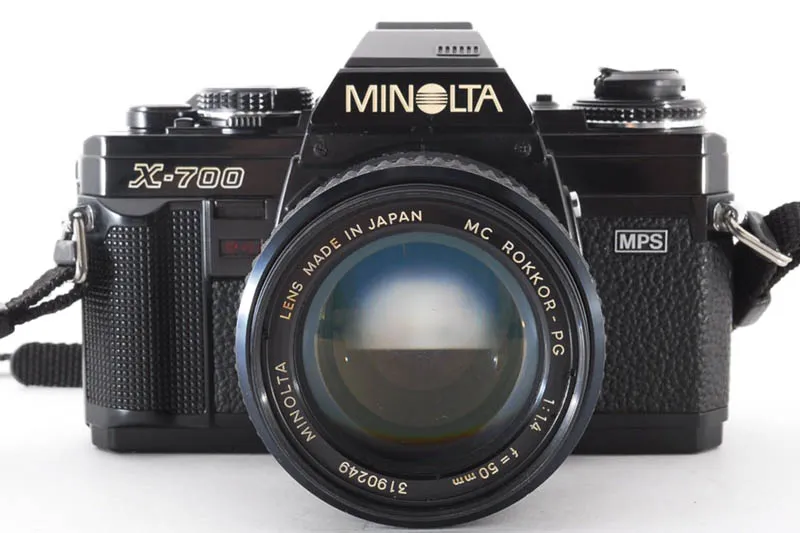
Price
There are plenty of other X-700 on the market considering the long production time of the camera. A good, tested example should be available for $60 – $120.
X-700 sample shots
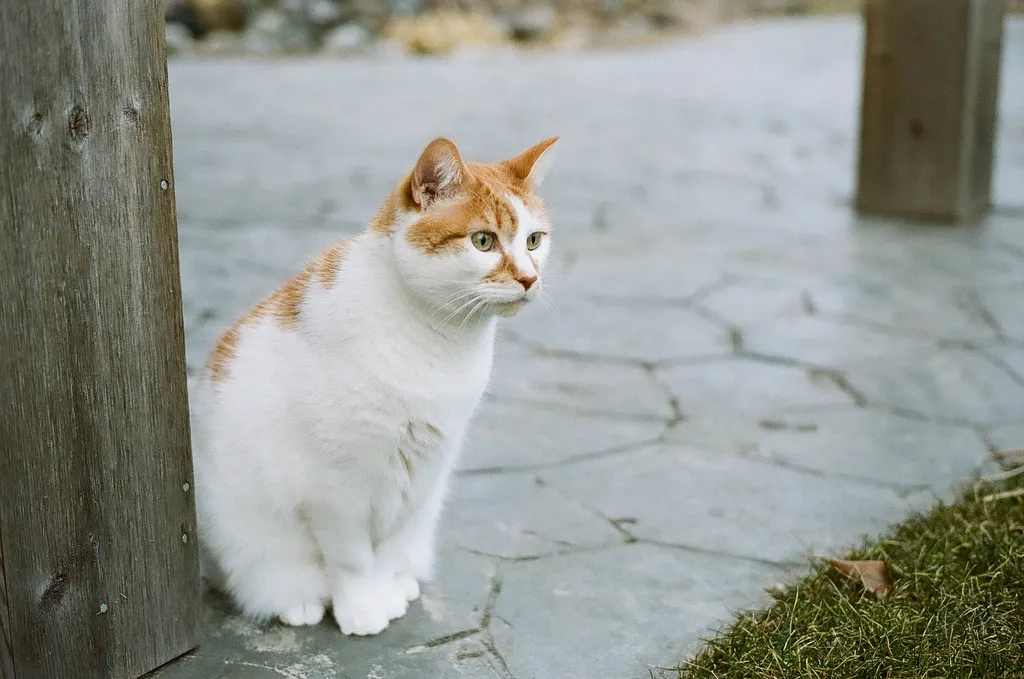


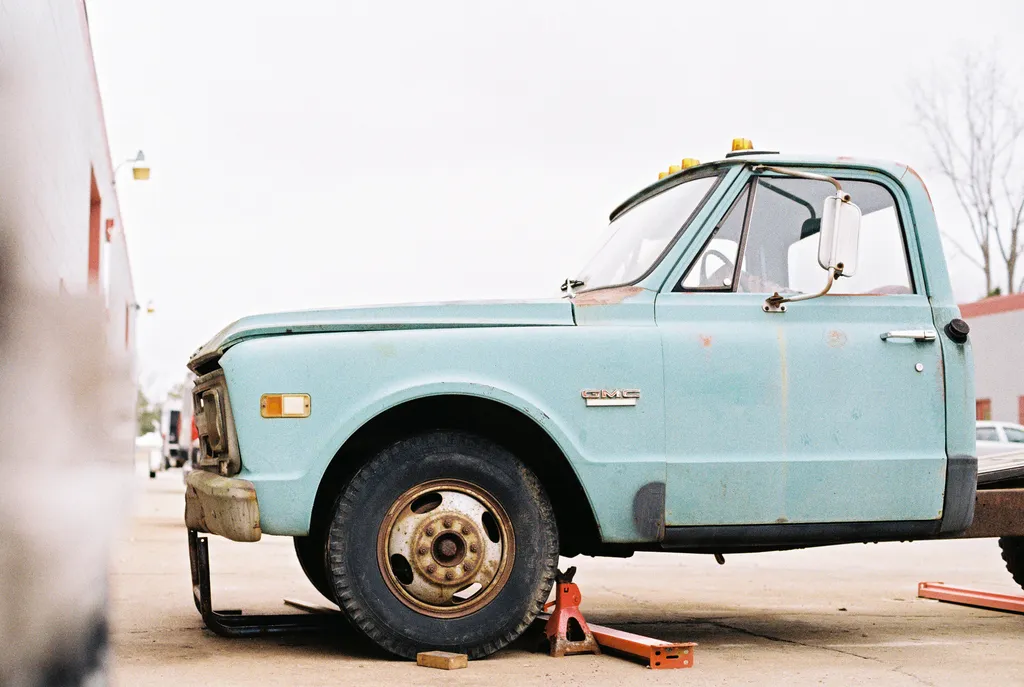

Final thoughts
Overall, the Minolta X-700 is a good beginner’s camera that can be safely operated in automatic mode, but can of course also be used fully manually if desired.
The electronics in the camera are also not particularly vulnerable. Of course, purely mechanical cameras give you a better feeling about a possible repair, but the electronic inner workings of the Minolta X-700 can be described as quite robust.
Buyers should make sure that the camera triggers correctly with the batteries installed and that the viewfinder LEDs are all working. If there were any problems at this point, I would keep my hands off it.
Like so many other things, the X-700 is a product of its time. The 80’s and 90’s are adored by some, hated by others. There are enough reasons for both views. The verdict on the X-700 could be just as conflicting.
As beginner-friendly as it is, there might be better solutions for more advanced photographers. But that’s often the case in life, you can’t have everything although with a Minolta X-700 you already have a lot, mostly good things.

